Mujaddid IOS Centre for Arts and Literature organises discussion on “Problems of Urdu Teaching in Madrasas”
Mujaddid IOS Centre for Arts and Literature organises discussion on “Problems of Urdu Teaching in Madrasas”
New Delhi: A discussion on the “Problems of Urdu Teaching in Madrasas” was organised by the Mujaddid IOS Centre for Arts and Literature at the Institute’s auditorium on April 19, 2025. The discussion was presided over by Dr. Waris Mazhari, professor of Islamic Studies, Jamia Hamdard, New Delhi.
The programme began with the recitation of a verse from the Holy Qur’an by Qari Mohammad Irshad.
Mr. Anjum Naim, convenor of the Mujaddid IOS Centre for Arts and Literature introduced the topic. He said that the Centre had organised two similar discussions on the subject to deliberate about the issues relating to the teaching of Urdu in schools. He had no qualms about accepting the fact that Urdu was being given a raw deal by the present political establishment. Their indifference to the teaching and promotion of Urdu tantamounted to being anti-Urdu. He held that every effort would be made to focus on all aspects of the issue. He expressed his gratitude to all the participants for their cooperation in making the discussion a success. He hoped that more and more Urdu lovers would benefit from the views expressed in the programme.
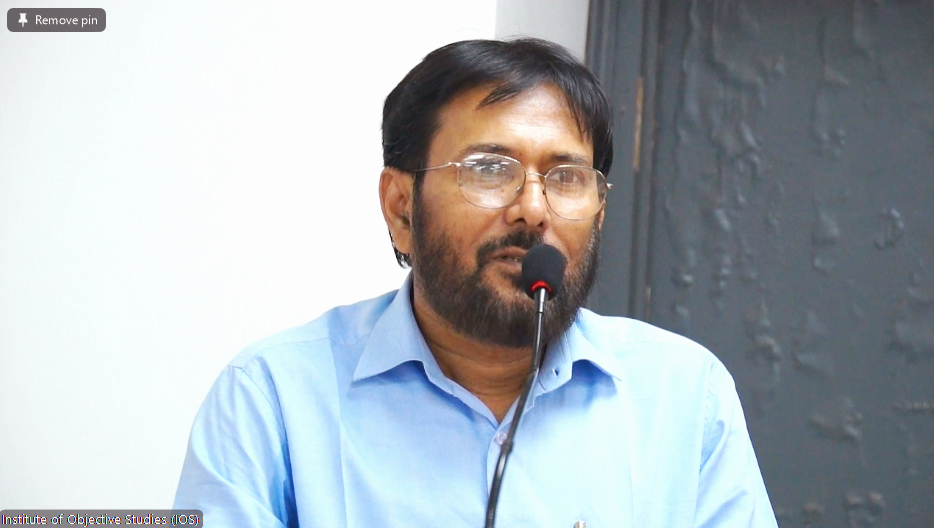
Senior Urdu journalist and writer, Mr. Ahmad Javed, who conducted the proceeding, noted that the salary being paid to Urdu teachers was meagre. They were discriminated against their counterparts in Hindi medium schools who drew handsome pay compared to them. He laid emphasis on the primary education in Urdu medium schools and said that the students studying in primary schools should be taught in their mother tongue.
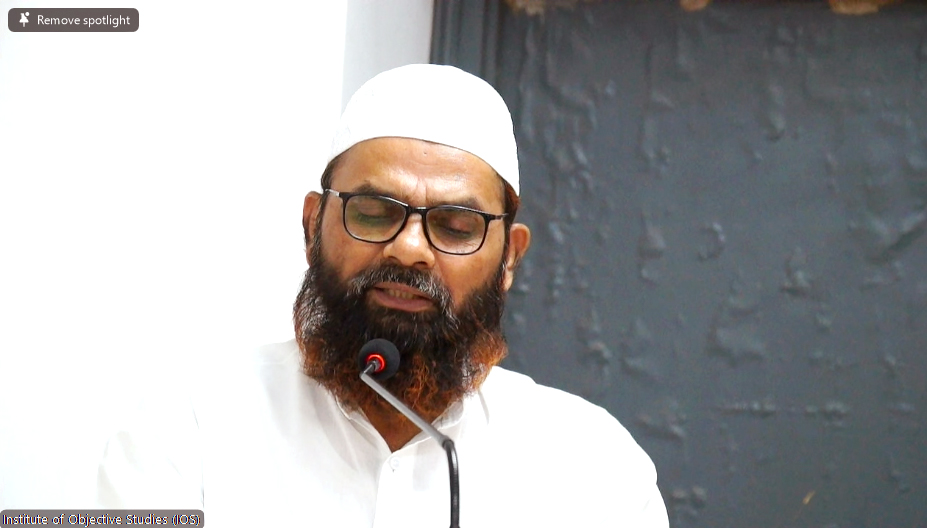
Maulana Dr. Shees Mohammad Idris Taimi, who is associated with the publications of Markaz Jamiat Ahle Hadees, said that in Uttar Pradesh about 20,000 madrasas were recognised. Out of these, about 12,000 to 18,000 were recognised by the U.P. Madrasa Board. About 60,000 madrasas in India were recognised. The total number of madrasas in the country stood at one crore. Madrasas had positively affected our education system. That was the greatest contribution of madrasas in the world. He complained that in big madrasas, little attention was paid to the primary section. Thus there was an urgent need for training of Urdu teachers in madrasas. He said that the purpose of teaching of languages in madrasas was to enhance the capacity of expression, and description of knowledge of deen among the students. Figuring out the problems of Urdu teaching in madrasas, he noted that the foremost problem was the lack of resources.
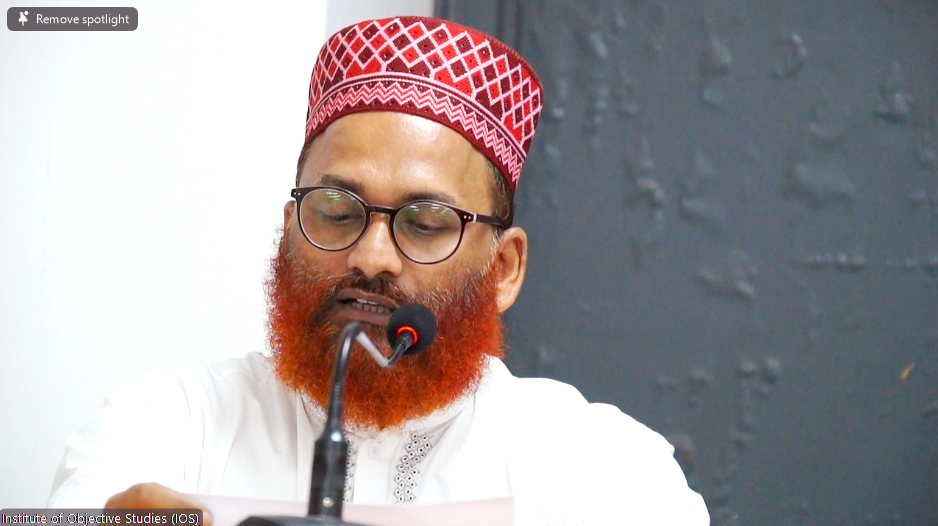
Maulana Dr. Zafruddin Barkati pointed out that barring Kerala and Tamil Nadu, Urdu was not being formally taught in madrasas. The teachers in these states knew Urdu. In rural areas, madrasas had a Hujrah (separate room) for the teachers. In urban areas, Hujrah was attached to the mosque. Big madrasas had their own curriculum. UP and Bihar Madrasa Boards had their own curriculum. He underlined the importance of Urdu in madrasas and said that non-inclusion of Urdu in madrasa curriculum as a subject was a big mistake. He also noted that the language could not only be learnt from the syllabus, but also from the environment around. Madrasas had a favourable environment but the syllabus was missing. Schools had the syllabus but the congenial atmosphere was missing there. Madrasas had Urdu as a medium of instruction but the teachers were speaking chaste Urdu. They must read Urdu poetry, novel and prose in order to acquaint themselves with the simple Urdu. He pleaded for making Urdu compulsory from beginning till end.
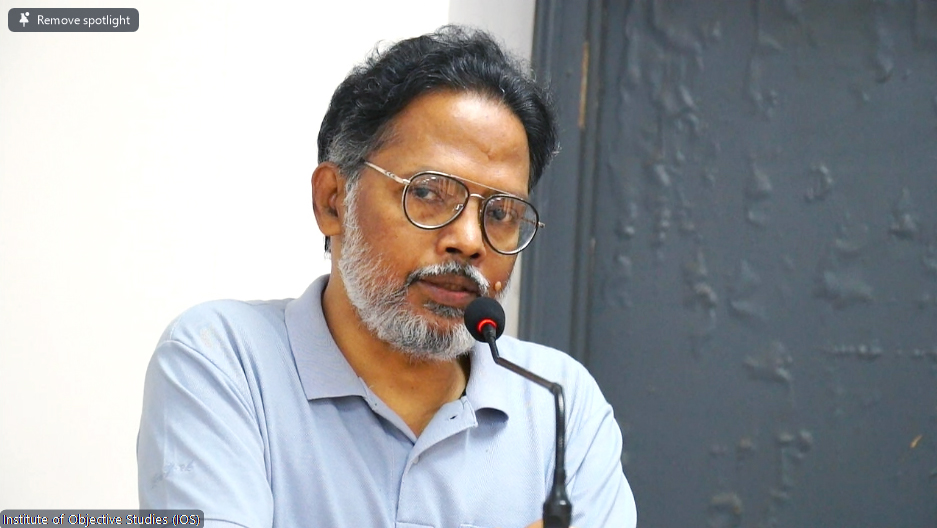
Dr. Wahid Nazeer from the Academy for the Training of Urdu Teachers, Jamia Millia Islamia, said that he was organising 10-day training programme for Urdu teachers of the madrasas and schools since last several years as he had 30 years of Urdu teaching experience. He was doing this as he had 30 years’ experience of teaching. He held that there were two categories of madrasas—1) Aaliya madrasa (known as Mazmoom), 2) Nizamiyah madrasa (known as medium). “We adopted Urdu as a medium, but we failed to strengthen Urdu as a language. No such effort was made in madrasas with Nizamiyah syllabus. Pass-outs of the madrasas were doing a dis-service to Urdu. But madrasas with Aaliya syllabus did not feel any difficulty in speaking and writing in Urdu. This was due to their training to formally learn Urdu. He laid emphasis on the need for providing Urdu grammar and text books.
There was also the need for expert teachers who could train students in Insha and Qawayad. Aaliya madrasas were nearer to the issue under discussion than Nizamiyah madrasas. He said that the syllabus of madrasas was undergoing a change due to the introduction to the new education policy. In the new policy, emphasis has been laid on the teaching of the mother tongue, but the impression is gaining ground that the madrasas do not need to teach Urdu. Besides making Urdu as a part of the curriculum, services of the able and trained Urdu teachers for the teaching of the language should be sought. He said that the presence of Urdu in madrasas as a medium of instruction was one thing but the teaching of the language as a subject was different. Earlier, Persian used to be the medium of instruction in madrasas. Persian was included in the syllabus as a subject. But, when Urdu was adopted by the madrasas as medium of instruction, they did not include it as a subject of the curriculum. This was a great mistake on the part of madrasas. Many Nizamiyah madrasas were still continuing the practice of the teaching of Persian as a subject, he added.
.jpg)
Ex-professor of mediaeval Indian History, Jamia Millia Islamia, Prof. Syed Jamaluddin, held that in Nizamiyah madrasas, there was the problem of Maakhaz. That was why Urdu was becoming weak. Urdu used to be the language of Ashraaf (Nobles). But now, they were turning to English, he averred.
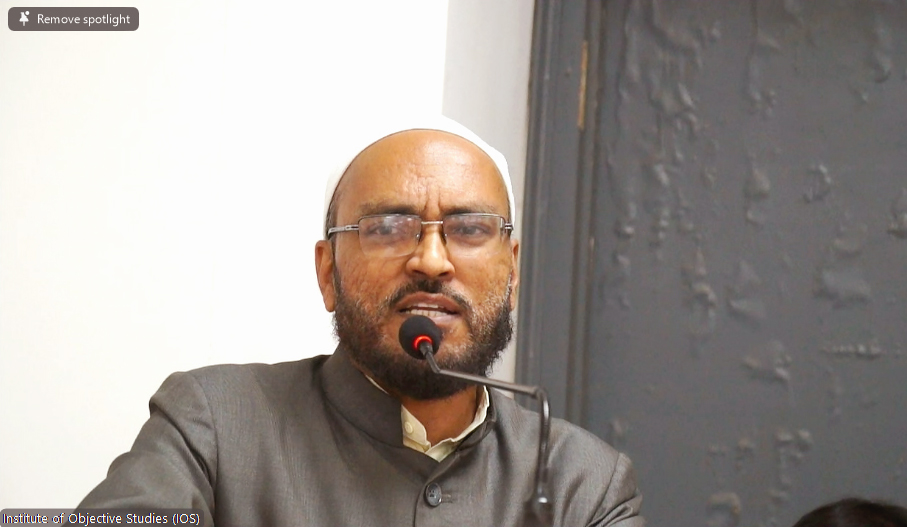
In his presidential remarks, Prof. Waris Mazhari, admitted that proper attention to language was not being paid in madrasas. Ninety percent of the pass-outs of madrasas did not know Arabic. There was a rat race to learn English, among madrasa students. He asked the madrasa managements to include Urdu as a subject in their curriculum. Madrasas focus was on Arabic as the entire Islamic knowledge was presented in that language. But, it was regrettable that, in spite of learning Hadith for 25 years, a student did not acclimatised himself with Arabic. Students who studied in madrasas also did not know Urdu. He called for promoting Urdu in madrasas. “This was necessary because it represented our culture. Likely, our cultural heritage is well preserved in Urdu. He also asked for cooperating with the madrasas in providing them opportunities for the study of Urdu fiction and literature”. He said that language the Maulvis spoke was mind-boggling. The new education policy made it compulsory to work in a framework. Under the new policy, Insha and a number of textbooks had been included. “We should pay proper attention to Urdu since it is our mother tongue. It is a matter of concern that we are weak in our mother tongue”, he concluded.
At the end, Mr. Anjum Naim, extended a vote of thanks to the attendees of the programme. He confidently said that, like previous ones, this discussion was also very successful. He informed that the proceedings of all the three discussions would be brought out in booklet form for the benefit of the people.
Go Back